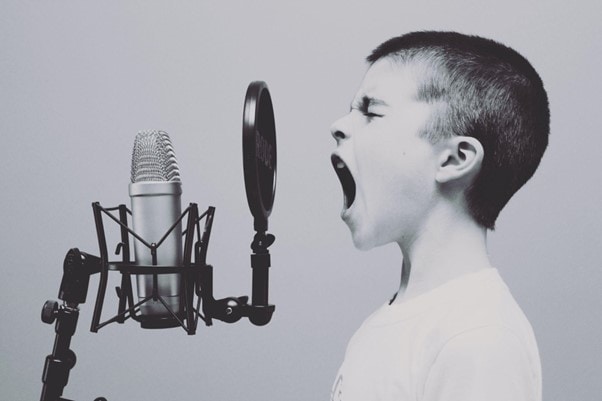Best Ways To Start Writing A Song For Children
Children’s music is a legitimate business that sometimes goes unnoticed since most children’s artists will never be renowned enough to be in the limelight. There are exceptions to this norm, including Raffi, The Wiggles, and many individuals who earn a fortune by performing children’s music.
A little background info can help explain why so few people know about kids’ rock & roll: It used no advertising (no record company even had any idea how much it would sell) because its audience was not interested in an artist or their talent didn’t appear on screen like other kinds of pop culture hits.
This is a true calling for certain artists. Writing songs for children and performing them isn’t just highly valuable; it is also challenging and fun. Your first thought would be writing songs for children is an easy task, but actually, it’s quite the opposite.
It would help if you did not only dazzle the children but also appeal to the parents so that they would purchase your songs. Children are not big spenders, but their parents are. Children enjoy music; it’s only a matter of getting their parents to purchase your music.
In this blog, you will see great ways to start writing a song for children, and it would be excellent if these methods were easy to follow in your own life! I’ll share some of my favourite techniques here, so look forward as I continue to share them.
Select A Topic
Children are constantly restless. Consider what you communicate with children and what they question about. Try responding to one of them with a song.
A child, for example, would inquire as to why the sky is blue. This one query might spark a slew of musical ideas. As you develop your mind’s capacity to associate other words with certain associations, this process becomes more subtle and deliberate.
Most of the children’s songs are about body parts. The main purpose of such songs is to educate them. Sometimes, artists use music to encourage children to establish healthy habits such as making their beds and cleaning their teeth. If you write one decent song on some of those topics, you may have parents happily singing along.
As you can see, the universe of children’s songs is rich with imagination. In reality, choosing a theme for a children’s song is easier than writing an adult song since children’s music does not carry all of the demands of mature music. When sung by adults, it must convey joy and connection; it cannot be too heavy or overly sentimental.
Choose A Melody
The majority of children’s songs are written with the main melody, and it makes little difference which one you choose as an adult. Experiment with your instruments to find a melodic phrase or two to utilize in your song.
A melodic phrase can be both a verse and a chorus. Keep your sentences as basic and catchy as possible so that they can quickly become lodged in a child’s mind. Your song’s chorus must be the most straightforward.
Build The Chorus
The chorus is the most significant portion of a children’s song. It’s generally something simple to memorize, sing, and occasionally dance to.
The repetitive nature of the chorus also makes it more catchy and helps it get stuck in your head, as heard on the most popular modern kids songs. The more you hear it, the more you like it.
Each verse in a song usually has its lyrics to build off of or contrast with the chorus. They are often written by different people than those who wrote the chorus.
Fun And Easy Verses
The verses must be simple to grasp and follow. You may go in various directions with the lines, but keep in mind who you’re singing for. If your listeners are a little older, you can use more complicated vocabulary. If your audience is young, you should generally keep the lyrics as basic as possible.
Keep In mind Song’s Purpose
Some believe that music communicates emotions in a way that other art forms cannot achieve. The purpose of a song is for people to listen to it. This includes listening for pleasure, for enjoyment for fun.
Song’s purpose can be different from one listener to another. However, the most common use of songs is fun and entertainment.

Repetition
Children learn by repetition. That is how kids learn to talk, count, and recognize the alphabet letters and words. Repeating the same theme helps kids learn and remember the song.
The song Wheels on the Bus starts with the same verse and ends with the same lines. Use repeated words, melodies, and lyrics to make your music readily recognizable and more interesting for kids. While writing a song for children, try to repeat some words to make your song easy to remember.
Choreography
Children like movement. You will keep their attention if you can persuade them to perform distinct motions and sing along to the music. It is very important to determine the audience’s age; if they are too young, they will have difficulty executing anything.
Instead of movement, ask the youngsters to make noises. Singing, clapping, and snapping are all tools used in music. These actions also seem to excite children.
Record Your Song
If possible, try to engage children in the singing of your song. It’s much better if you can acquire a range of various voices to simulate the vibes of a family sing-along, such as an adult woman, an adult guy, and many youngsters.
You can use a variety of instruments to help your music sound more professional and orchestrate it a little more. If you want to create a polished end product, have your music professionally recorded, mixed, and mastered.
If you are able, have someone record your song and then listen back to it so you can hear the work that still needs to be done.
Conclusion:
There are different ways of writing songs for children and it requires just as much consideration as writing songs for adults. Most importantly, having a great time. Kids simply want to have fun, and you are now an entertainment provider.
Read about the top benefits if learning music for kids and adults alike.






 Explore the Safe Search Engine -
Explore the Safe Search Engine -